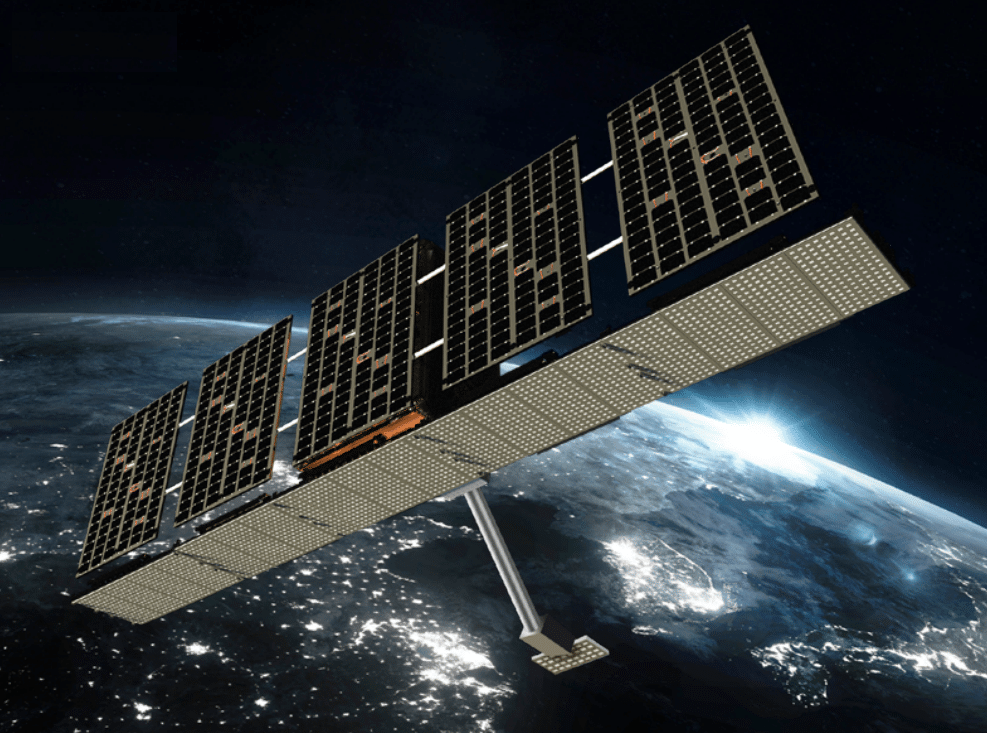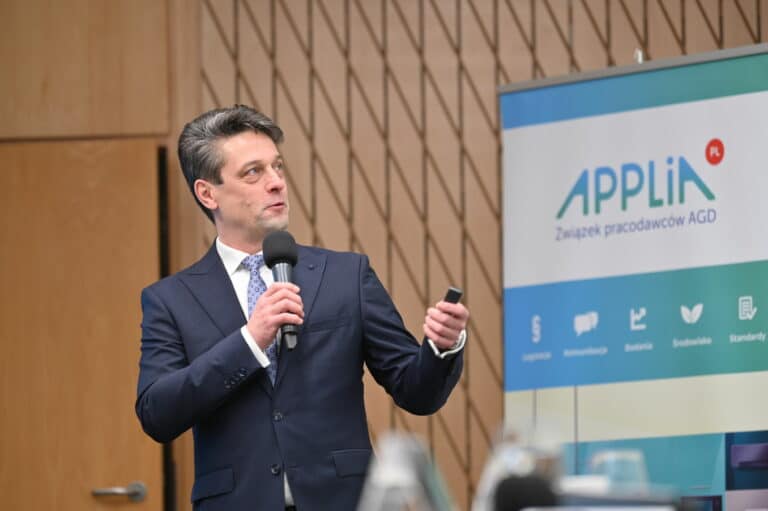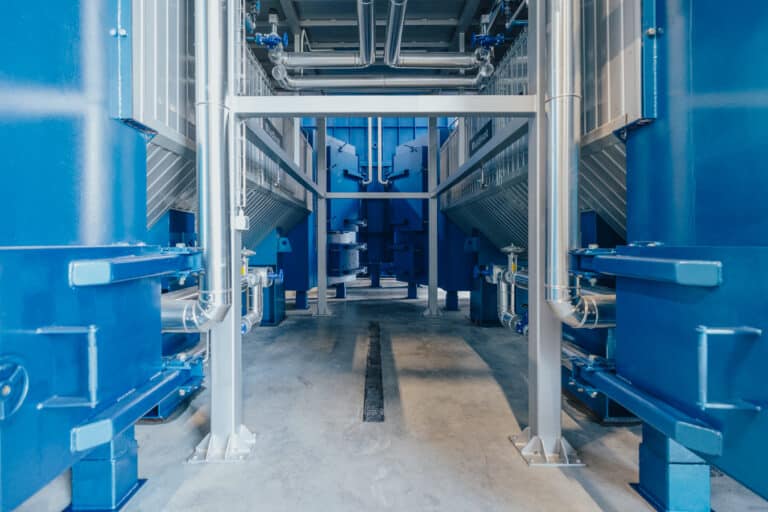Cosmic progress as Poland rockets into space age
Last year, Poland celebrated the 550th anniversary of the birth of the Polish astronomer Nicolaus Copernicus, discoverer of the Solar System as the starting point for contemporary knowledge of what’s beyond the Earth. Five centuries later and the field of space is again witnessing unprecedented developments in science, technology and business, where mankind is making enormous strides in communication, observation and measurement. So, is Copernicus’ homeland ready to embark on this historic task?
Beyond doubt Poland is now playing in the world’s cosmic premier league, as reflected in international rankings. For example, in the last several years it has been the unquestionable Central and Eastern European leader in the quantity and potential of high-technology startups. The Polish information technology (IT) industry, with over 100,000 companies, generates in total almost €50 billion. The Polish Patent Office registers several thousand inventions per year. According to the Organisation for Economic Cooperation and Development (OECD), which runs the Programme for International Student Assessment (PISA) measuring intellectual potential in over 80 countries accountable for 90% of the global economy, Polish teenagers are ranked 12th in the world and 3rd in Europe. The International Monetary Fund has calculated that in the last 30 years Poland’s GDP increase was the second highest in the world after China’s.
Thus, Poland has the ability to reach the stars and this has already been embarked on by scientific institutions, state agencies and private companies. Their initiatives became so abundant that in 2014 the Ministry for Development and Technology established the Polish Space Agency (POLSA) to support and promote their endeavors and to represent Poland in international space undertakings. It has also formulated and is implementing the National Space Programme, necessary for creating the skills needed to develop the Polish space industry and ensure its competitiveness on the market. Indeed, space is already a world market worth about €400 billion and Poland has 15,000 jobs in over 450 public and private enterprises, institutions and universities involved in it. Where can we see their achievements?
In orbit
The first Polish satellite PW-sat was engineered by students of Wrocław University of Science and Technology and put in orbit in 2012 by the European Space Agency’s (ESA) Vega rocket during its first flight from French Guiana. Its task was to test an innovative deorbiting system intended to remove inactive satellites, or – colloquially – to ‘clean’ space. Deorbiting PW-Sat2 was launched in 2018 by the Falcon 9 rocket, owned by Elon Musk’s SpaceX to test the solar sail as a power source. PW-Sat3 is expected on orbit in 2025 to test warm-gas power.
SpaceX is the world leader in satellites, manned flights and even future Mars exploration. So far it has accomplished over 330 missions, putting into orbit over 500 satellites from various countries, including Poland. Last year it launched the Polish satellite Star Vibe engineered by Scanway and three SAR satellites engineered by Polish-Finnish company Iceye, established by Rafał Modrzewski and Pekka Laurila in 2014. Iceye is today the world leader in Synthetic Aperture Radar (SAR) technology after having deployed a constellation of 40 satellites, used i.a. by UK and Brazilian governments and US armed forces. The most recent ones were launched by SpaceX on 16 August 2024. A 30-person Iceye flight control center is in Warsaw, Poland. In 2025, SpaceX will launch another Polish satellite from Liftero to test innovative environment-friendly fuel. Poland is also cooperating with France. The Ministry of National Defence has contracted Airbus to engineer two observation satellites with a receiver station in Poland. They will be put into orbit in 2027 to image large Earth areas with 30 cm accuracy for military and environmental purposes.
Moreover, Poland is already constructing its own satellites. On 16 August 2024, Falcon 9 launched its biggest and most complicated observation satellite EagleEye engineered by private companies Creotech Instruments and Scanway and by the Space Research Centre of the Polish Academy of Sciences (PAN). It has been put in a 300 to 350 km orbit for precise imaging of the Earth. At the same time, Intuition-1 satellite engineered by a company KP Labs delivers new Earth images processed on orbit by artificial intelligence (AI) algorithms, while PIAP Space is developing a technology of refueling satellites in orbit. Another project PIAST (Polish ImAging SaTellites) run by a consortium of Jarosław Dąbrowski Military University of Technology, Creotech and PAN, while the Łukasiewicz Research Network and Scanway to design, construct and deploy in 2025 a constellation of three PIAST nanosatellites for 5 m resolution imaging. Piast is the name of the first Polish royal dynasty dating back to the 9th century.
On the Moon
Poland reaches beyond orbit. In November 2022, the Moon was circled by the Orion Multi-Purpose Crew Vehicle in NASA’s Artemis program attended by various private companies and international organizations, including the ESA. During the 42-day flight Orion tested infrared radiation detectors from Polish company Vigo Photonics and ionizing radiation detectors from the PAN Nuclear Physics Institute. It also contained three dummies, nicely named Helga, Zohar and Campos, as Artemis’ final goal is to send man to the Moon and later to build a station there. The first manned flight Artemis 2 is scheduled for 2025 and a four-member crew has been selected – the first since NASA’s Apollo 17 mission of 1972. Their primary task will be to test life-sustaining systems.
Is there any place for Poland on the Moon too? Maybe, especially for young Poles. The planetary rover Magma2 constructed by students from Białystok University of Technology, won the international University Rover Challenge in the US in 2011, beating a US team supported by NASA. From that time young Polish constructors have been victorious in numerous international competitions. The Kalman rover built by the AGH Space Systems students club at AGH University of Kraków in 2018 is one winner. On 1 June 2024, it came first among 102 teams from all over the world in the University Rover Challenge (URC) at Mars Society Research Desert Station in Utah, US. Kalman has 3D-printed wheels, stereo camera, 5-cm-precision GPS and other innovative devices.
The Polish presence on the Moon is not new. After the first American astronauts’ landing in the historic 1969 Apollo mission, NASA contracted construction of rovers for its next missions with a team lead by the Polish engineer Mieczysław Bekker, a graduate of the Warsaw University of Technology and veteran of WW2. They built the Lunar Roving Vehicle (LRV), in which Bekker personally created mobility solutions. The vehicle weighed 200 kg and reached up to 100 km with 4-wheels drive. General Motors and Boeing built four such vehicles that traversed the Moon in 1971 and 1972.
On the Milky Way
It is noteworthy that AGH students construct not only state-of-the-art rovers but also rockets flying to altitudes of 10 km and ranked equally high in international competitions, some bearing pleasant names like Baguette, Panda or Turbulence. Their hybrid fuel rocket 3-TTK+ won 4th place in Spaceport America Cup 2023 with 148 teams from 24 countries, including three other Polish finalists from the technology universities in Wrocław, Gdańsk and Poznań. 3 July 2024 passed to the history of Polish space flights, as on that day the suborbital rocket Bursztyn K2 engineered by the Łukasiewicz Institute of Aviation and co-financed by the POLSA passed the space frontier at an altitude of 100 km flying at 1.4 km/s. This advanced achievement proves that Poland is able to construct and operate its own launch vehicles to put satellites into low orbits.
However, orbit and the Moon are not the final Polish destinations. In April 2023, the ESA launched its Jupiter Icy Moon Explorer (Juice) mission attended by 16 European countries, the US, Japan and Israel. The mission will research physical and chemical conditions of Jupiter moons, especially Ganymede as a potential base for further deep space explorations. Polish contribution to Juice is of key importance as three out of ten on-board instruments have been constructed in Poland, two by PAN Space Research Centre and one by Astronika company.
Polish presence in space is not only technological, but also human. In 2022 ESA selected 17 potential astronauts out of 22,000 to work in the International Space Station (ISS). Among 594 Polish volunteers was Sławosz Uznański, Ph.D., who in August 2024 was finally appointed to the 2025 mission with three astronauts from the US, India and Hungary. He will experiment with Polish technologies and has already moved to Houston for training in Axiom Space, SpaceX and NASA, while ESA and Polish entities signed seven contracts for ISS experiments, e.g. in AI and medicine. Interestingly, Poland also has astronaut training facilities: Polish Analog Training Center in Rzepiennik and Lunares Research Station in Piła.
As the Polish Space Agency POLSA celebrates its 10th anniversary in September 2024, Poland is participating in 11 out of 24 ESA space missions to explore the Moon, the Sun and the planets. Together with missions in NASA and SpaceX, Poland’s success is truly cosmic. POLSA President Prof. Grzegorz Wrochna concluded in a WP Tech interview: “A few years ago I compared the Polish space industry to a crouching tiger. At that time the analogy was mocked but today the tiger has leaped.”







